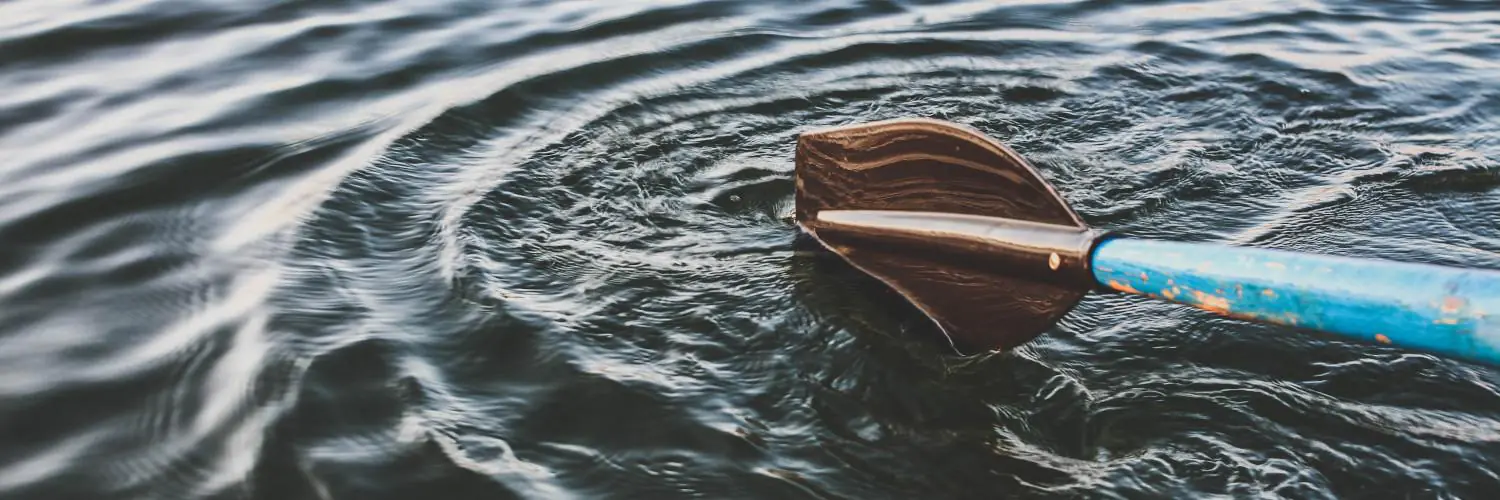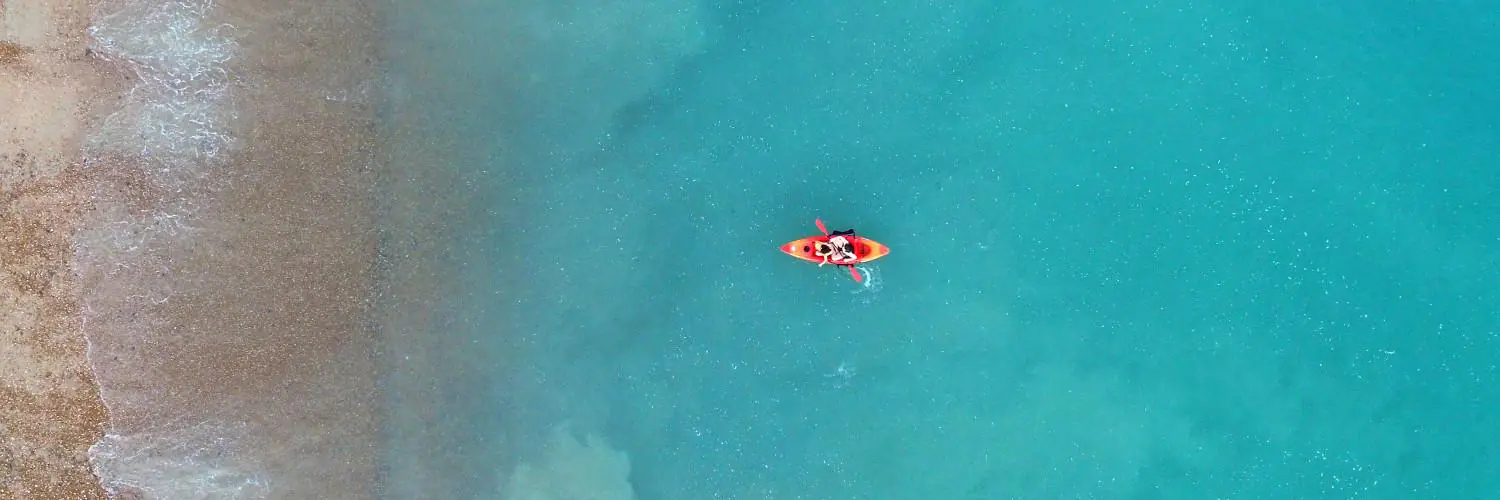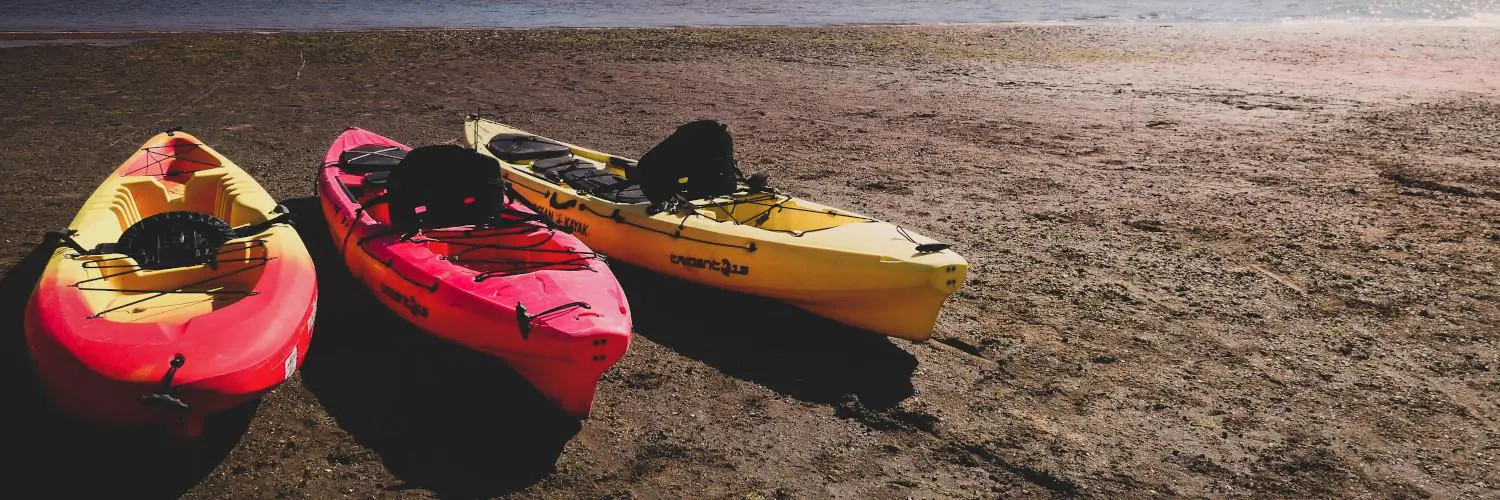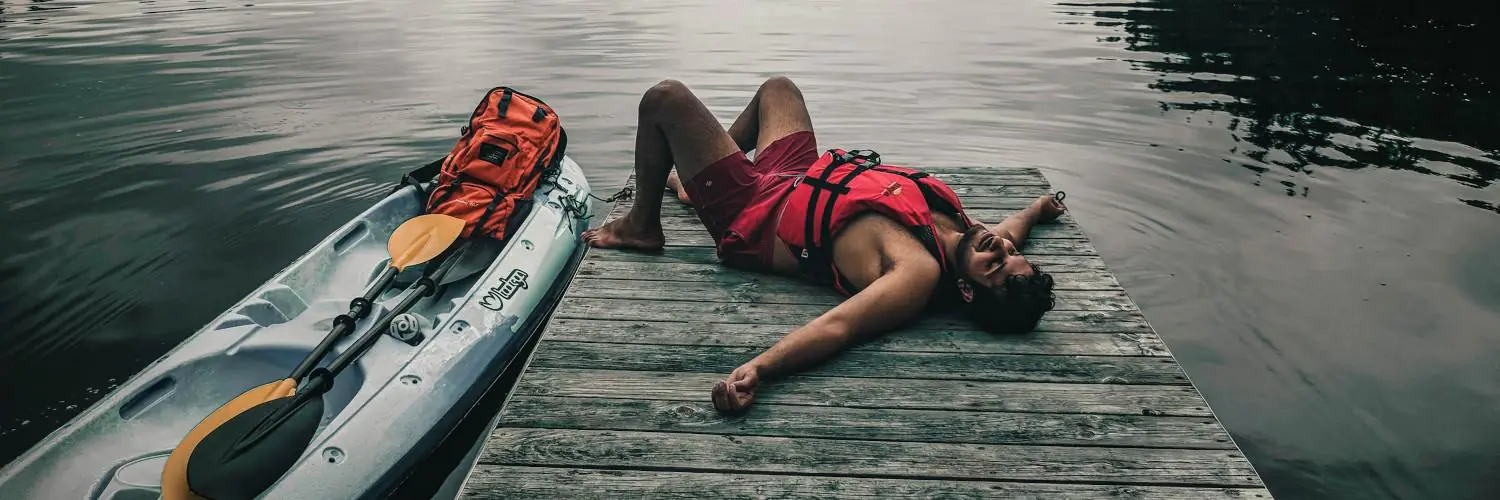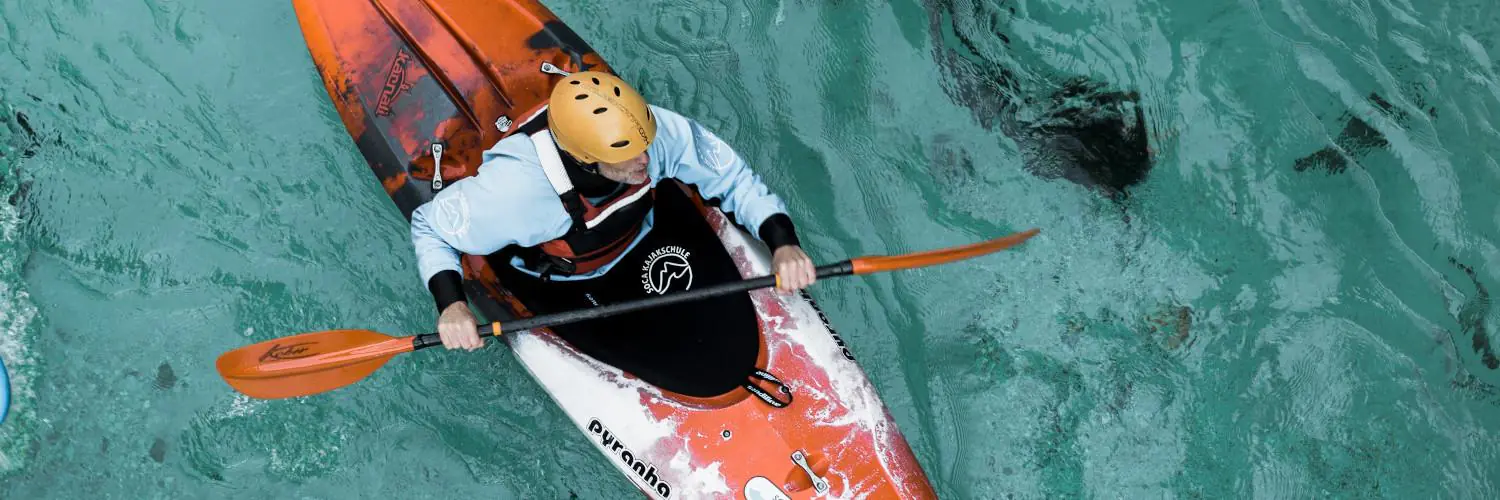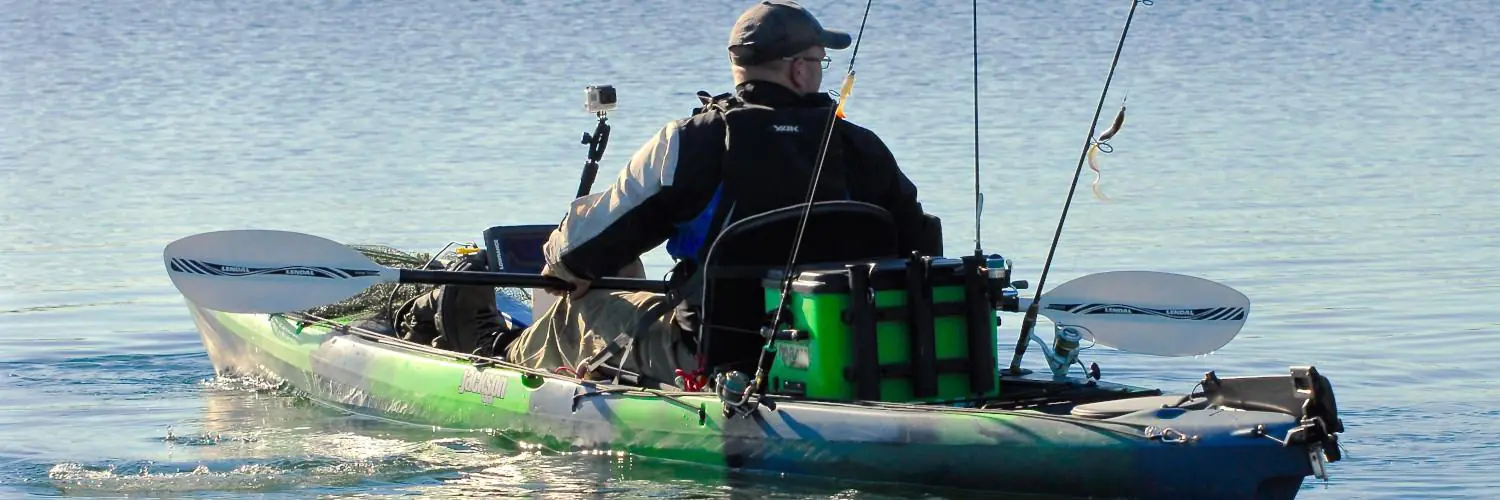Kayak materials play a crucial role in the performance, durability, and cost of these popular watercraft. From lightweight composites to affordable polyethylene, each material offers unique benefits for paddlers.
The most common kayak materials are polyethylene, composites like fiberglass and carbon fiber, and wood.
Polyethylene kayaks are tough and budget-friendly. They can handle rough treatment, making them great for beginners and whitewater paddling.
Composite kayaks, made from materials like fiberglass or carbon fiber, are lighter and faster on the water. These high-performance boats are favored by racers and long-distance paddlers.
Wooden kayaks offer a classic look and feel. They can be as strong as composite boats but often weigh less. Some paddlers enjoy building their own wooden kayaks. This gives them a deep connection to their craft and the sport of kayaking.
Table of Contents
Materials Used in Kayak Manufacturing
Kayaks are made from a variety of materials, each with unique properties. These materials affect the kayak’s weight, durability, performance, and price.
Hard-Shell Kayaks and their Constituents
Polyethylene is a common material for hard-shell kayaks. It’s tough, affordable, and can take a beating. Manufacturers mold it into shape using rotational molding.
Fiberglass kayaks offer a good balance of weight and strength. They’re made by laying fiberglass cloth in a mold and adding resin.
Composite kayaks use materials like carbon fiber or Kevlar. These boats are light and stiff, perfect for racing or long trips.
Wooden kayaks are beautiful and light. Builders use thin strips of wood, often cedar, to create the hull.
Pros and Cons of Inflatable and Folding Kayak Materials
Inflatable kayaks are made from durable fabrics like PVC or Hypalon. They’re easy to store and transport.
PVC is cheap but can degrade in sunlight. Hypalon lasts longer but costs more.
Some inflatables use drop-stitch construction. This creates a rigid floor that performs more like a hard-shell.
Folding kayaks have a frame of wood or aluminum. The skin is usually a tough fabric like polyester or nylon.
These boats pack small but take time to set up. They perform well on the water and are great for travel.
Considerations for Choosing Kayak Materials
Kayak materials impact performance, durability, and cost. The right choice depends on your needs and paddling style.
Comparing Weight and Performance Trade-offs
Kayak weight affects speed and maneuverability. Lighter materials like fiberglass and carbon fiber offer better performance but cost more. Plastic kayaks are heavier but cheaper.
Composite kayaks mix materials for a balance of weight and strength. They’re fast on the water but need careful handling during transport.
HDPE (high-density polyethylene) kayaks are tough and affordable. They’re good for beginners and rough conditions. ABS plastic is lighter than HDPE and resists impacts well.
Storage and transportation needs matter too. Lighter kayaks are easier to carry and load on a car.
Handling, Durability, and Repair
Different materials handle water conditions differently. Plastic kayaks flex more, absorbing impacts. This makes them good for rivers with rocks.
Fiberglass and carbon fiber are stiffer. They track better in open water but can crack on hard hits. These materials need more care during use and storage.
Repairs vary by material. Plastic kayaks often just need heat to fix dents. Composite kayaks might need professional repairs for cracks.
UV resistance is important for kayaks stored outside. Some plastics fade and weaken in sunlight. Many modern kayaks have UV protection built-in.
Paddling experience affects material choice. Beginners might prefer durable plastics. Experienced paddlers often choose lighter, high-performance materials.
Impact of Materials on Kayak Design and Use
Kayak materials shape the design and performance of different types. The choice of material affects weight, durability, and how the kayak handles in various waters.
Hull Configuration and Material Choices
Hull design and materials work together to create kayaks for specific uses. Plastic kayaks are tough and low-cost, making them good for beginners. They work well for recreational paddling on calm waters.
Fiberglass and composite kayaks are lighter and faster. These materials allow for sleeker hull shapes that cut through water easily.
Sea kayaks often use composite materials to achieve long, narrow hulls for speed and tracking. Whitewater kayaks need to be very strong. They use high-impact plastics to withstand rocks and rapids. Some high-end kayaks use carbon fiber for the lightest possible weight.
Material Considerations for Different Kayaking Environments
The paddling environment impacts material choice. Plastic kayaks stand up well to rocky shores and rough handling. This makes them good for rivers or areas with limited beach access.
Composite kayaks perform better in open water. Their smooth hulls move efficiently for long touring trips.
Salt water can damage some materials over time. Sea kayaks need materials that resist corrosion.
UV rays can weaken plastics, so storage and care matter for longevity. Cold climates may require stiffer hull materials that don’t flex in icy conditions. Warm areas might use materials that don’t get too hot in the sun.
Advancements and Innovations in Kayak Materials
Kayak materials have seen major improvements in recent years. New options offer better performance, durability, and sustainability.
Modern Composites and High-performance Materials
Composite materials like carbon fiber and Kevlar have changed kayak design. These lightweight, strong materials allow for stiffer, faster boats.
Carbon fiber kayaks are very light and rigid. This makes them great for racing and high-performance paddling.
Kevlar kayaks mix strength with flexibility. They can take hard hits without cracking. Epoxy resins help bond these materials together. The result is a tough, long-lasting kayak.
Thermoformed ABS plastic is another innovation. It’s lighter than traditional plastics but still affordable.
Thermoform kayaks keep their shape well in hot sun. They also resist dents and scratches better than other plastics.
Eco-friendly and Sustainable Material Developments
Kayak makers are now using more eco-friendly materials.
Some are trying recycled plastics from the ocean. This helps clean up pollution while making new boats.
Plant-based resins are replacing some petroleum products. These come from renewable sources like soybeans. They work well with natural fibers like flax or hemp.
Some companies use recycled foam cores. This cuts waste and gives old materials new life. Others are testing biodegradable options for parts like seat padding.
These green choices help reduce the environmental impact of kayak production. They also appeal to eco-conscious paddlers who want sustainable gear.
Maintaining and Storing Different Types of Kayaks
Proper care and storage are key to extending a kayak’s lifespan. Different materials require specific maintenance approaches to prevent damage and keep the kayak in top shape.
Protecting Kayaks from Environmental Damage
UV rays can harm kayak materials, especially plastic ones. Store kayaks indoors or use covers when outside.
Clean kayaks after each use with fresh water. For saltwater trips, use mild soap to remove salt residue.
Keep kayaks off the ground to avoid moisture damage. Use padded racks or suspension systems. Don’t leave kayaks in direct sunlight for long periods. This can cause warping or fading.
Apply UV protectant sprays to plastic kayaks yearly. For fiberglass kayaks, use marine wax to shield the gelcoat.
Rotate kayak position regularly if stored on its side to prevent hull deformation.
Repair Techniques for Various Materials
Plastic kayaks often get scratches or small cracks. Use a plastic welding kit for HDPE repairs. Heat the damaged area and add filler material.
For ABS kayaks, special adhesives work best.
Fiberglass kayaks need different fixes. Small cracks can be patched with epoxy and fiberglass cloth. Sand the area, apply epoxy, add cloth, then more epoxy. Sand smooth when dry.
Inflatable kayaks may get punctures. Use patch kits made for the kayak’s material. Clean the area, apply adhesive, and press on the patch. Let it dry fully before use.
For all repairs, follow product instructions carefully. Test fixes in shallow water before long trips. Some complex repairs might need professional help to ensure safety.


